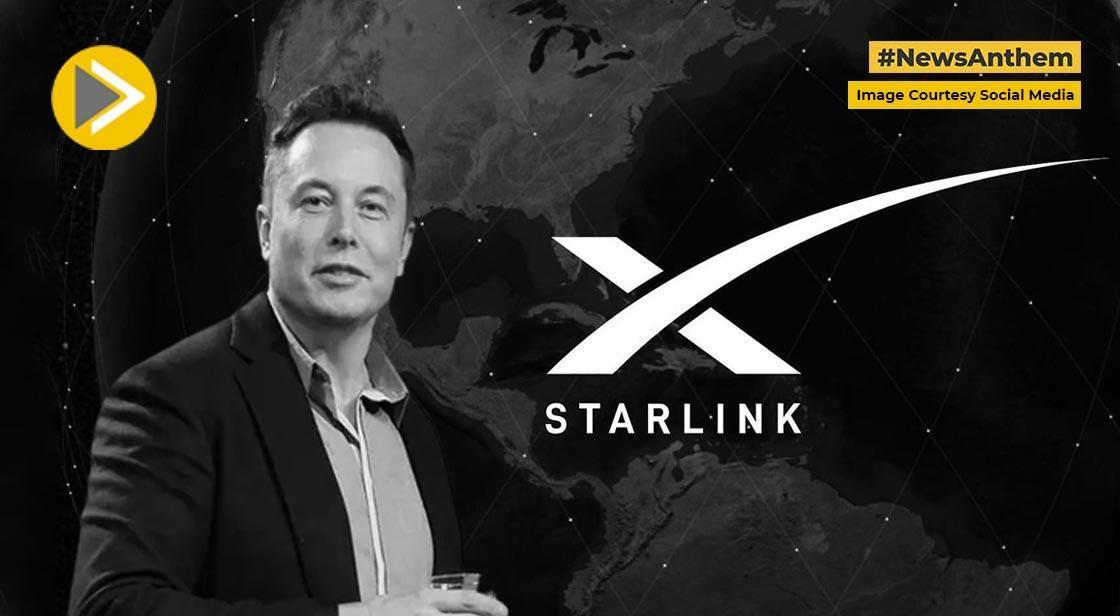Elon Musk's Starlink May Launch in India at Just ₹840/Month: Here’s What We Know

Podcast
News Synopsis
Elon Musk's satellite internet venture Starlink, along with competitors such as Bharti Group-backed Eutelsat OneWeb, Jio-SES, and Globalstar, is preparing to enter India’s vast and competitive telecom market. A recent Economic Times report suggests Starlink may offer unlimited data plans for under $10 (around ₹840) per month—a promotional pricing model aimed at attracting mass adoption.
Affordable Plans, Expensive Hardware – A Mixed Bag
Despite high licensing and spectrum acquisition costs, satellite internet providers plan to scale by keeping their data plans affordable. Experts believe this aggressive pricing will help them recover large infrastructure investments by spreading the cost across a wider user base. Starlink and its rivals are targeting up to 10 million users in India over the long term.
However, while the monthly tariff is attractive, the initial hardware cost might discourage adoption. Globally, Starlink kits are priced between $250 and $380 (approximately ₹21,300 to ₹32,400), making them significantly more expensive than India’s existing fibre broadband options that offer speeds up to 1 Gbps and come bundled with OTT benefits.
Regulatory Landscape – Awaiting Final Clearance
Spectrum and Licence Costs
India’s telecom regulatory authority (TRAI) has proposed a 4% levy on adjusted gross revenue (AGR), with a minimum annual spectrum charge of ₹3,500 per MHz. In addition, an 8% licence fee will apply. In urban markets, an extra ₹500 per subscriber annually will be charged, while rural users are exempt. These proposals are pending final approval from the government.
Starlink’s Regulatory Status
While Eutelsat OneWeb and Jio-SES have already received approval, Starlink is still waiting on the green light. It has received a letter of intent from the Department of Telecommunications (DoT) and is awaiting final clearance from IN-SPACe (Indian National Space Promotion and Authorisation Centre).
Technical Limitations Could Curb Starlink’s Ambitions
Though Starlink’s pricing might create buzz, its geographical satellite coverage in India is limited. Currently, India gets just 0.7% to 0.8% of Starlink’s global satellite bandwidth, translating to only 700–800 satellites servicing the region at any time. In contrast, India’s terrestrial network is far more robust, with 800,000+ telecom towers and 3 million base transceiver stations.
A Look at Regional Pricing – Starlink in Bangladesh
To understand the potential pricing model, consider neighboring Bangladesh where Starlink charges 6,000 BDT (₹4,200) per month. New subscribers must pay an upfront equipment cost of 47,000 BDT (₹33,000) and an additional shipping fee of 2,800 BDT (₹2,000), bringing total start-up expenses to nearly ₹37,200.
About Starlink
Starlink is a revolutionary satellite internet service operated by SpaceX, Elon Musk's aerospace company. Its core mission is to deliver high-speed, low-latency broadband internet globally, especially to underserved and remote areas where traditional internet infrastructure is either non-existent or unreliable.
Key Aspects of Starlink:
1. How Starlink Works (Low Earth Orbit Satellites - LEO):
-
Constellation of Thousands: Unlike conventional satellite internet, which relies on a few large geostationary satellites far from Earth (around 35,786 km), Starlink utilizes a massive "mega-constellation" of thousands of small satellites in Low Earth Orbit (LEO), typically at an altitude of about 550 km. As of April 2025, over 7,355 Starlink satellites have been launched, with around 4,800 active ones.
-
Low Latency: This much closer proximity to Earth drastically reduces the time it takes for data to travel (latency). While traditional satellite internet suffers from high latency (often 450-700 milliseconds), Starlink aims for 25-60 milliseconds, making it suitable for real-time applications like online gaming, video calls, and streaming.
-
Global Coverage: The lower orbit means each satellite covers a smaller area. Therefore, a large constellation is necessary to provide continuous, near-global coverage. SpaceX regularly launches batches of new satellites using its reusable Falcon 9 rockets.
-
Ground Stations and User Terminals:
-
Ground Stations (Gateways): These connect the Starlink satellite network to the broader internet infrastructure on Earth.
-
User Terminals (Dishy McFlatface): Customers receive the internet signal via a self-aligning parabolic dish antenna (often informally called "Dishy McFlatface") that automatically points to the optimal satellites.
-
2. Key Features and Advantages of Starlink:
-
High Speed: Starlink offers typical download speeds ranging from 25 to 220 Mbps, with many users experiencing speeds over 100 Mbps. Upload speeds are generally 5 to 20 Mbps.
-
Low Latency: As mentioned, this is a significant advantage over traditional satellite internet.
-
Global Availability: Starlink aims to bring internet access to even the most isolated parts of the world. As of March 2025, Starlink serves over 5.4 million global subscribers across over 114 countries and territories.
-
Portability & Mobility: Starlink offers various service plans that cater to different needs, including mobility options for RVs, boats (Starlink Maritime), and even aviation (Starlink Aviation), allowing users to maintain connectivity on the go. There's also a compact, portable "Starlink Mini" kit.
-
Easy Setup: The user terminal is designed for straightforward self-installation.
-
No Contracts: Starlink typically operates without long-term contracts.
3. Starlink in India:
-
Regulatory Progress: As of early May 2025, Starlink has received a Letter of Intent (LoI) from the Indian government's Department of Telecommunications (DoT). This is a crucial step towards obtaining a license to operate in India.
-
Compliance: The approval follows Starlink's commitment to adhere to India's national security guidelines, which include requirements for data localization (data to remain within Indian borders) and ensuring user traffic is not routed through overseas gateways. Companies must also explore the use of NavIC (India's indigenous satellite navigation system).
-
Remaining Approvals: Before commercial launch, Starlink still needs final authorization from the Indian National Space Promotion and Authorization Centre (IN-SPACe) and spectrum allocation from the government. Similar processes for competitors like Eutelsat OneWeb and Jio Satellite Communications have taken nearly two years post-license.
-
Potential Partnerships: Reports suggest Starlink has signed agreements with major Indian telecom networks like Reliance Jio and Bharti Airtel for potential retail partnerships and customer service support.
-
Expected Pricing: While official pricing is pending, promotional unlimited data plans might be available for under ₹840 per month, according to some reports. However, hardware costs could be a significant upfront investment, ranging from approximately ₹21,300 to ₹32,400 (globally, hardware kits cost $250-$380).
-
Target Market: Due to the relatively higher costs compared to fiber broadband, Starlink in India is likely to cater initially to enterprise clients, government institutions, and individuals in remote, rural, or underserved areas where traditional internet options are limited or non-existent.
Conclusion:
Elon Musk’s Starlink could revolutionize India’s rural and remote internet access with its aggressive entry pricing. But affordability may be short-lived once full-scale rollout and regulatory compliance begin. Additionally, the high hardware cost and coverage limitations remain key concerns. Whether Starlink becomes a viable broadband alternative for Indian consumers hinges on final regulatory clearances, infrastructure investments, and market response.





